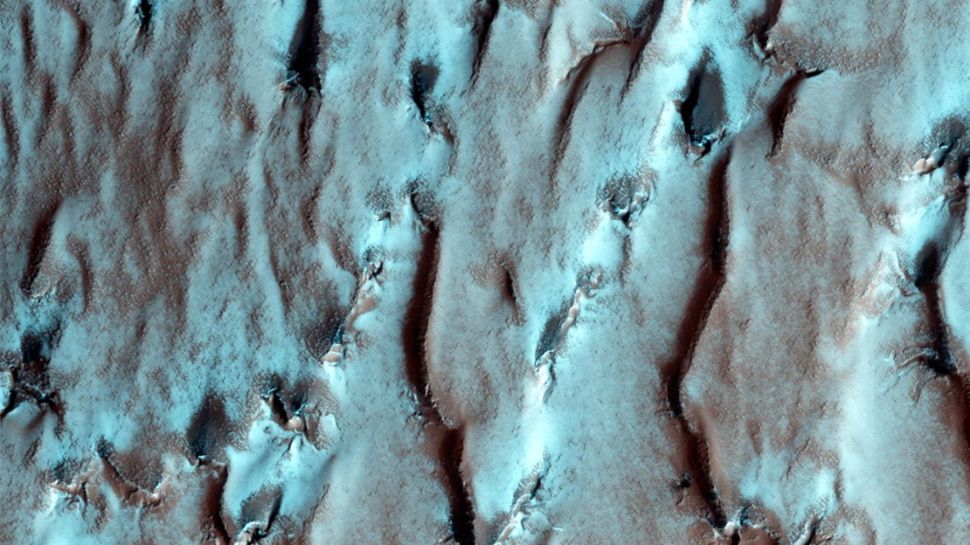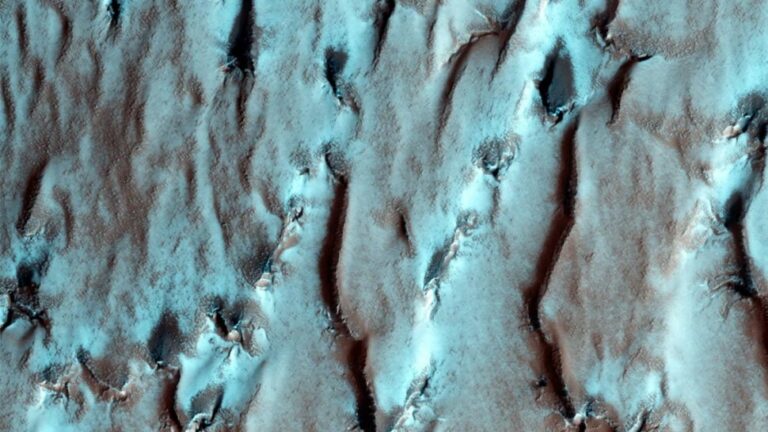Reflections on Mars might be caused by anything other than water.
Scientists hoped it was a lake under the ice, but it may just be a mirage.
It doesn’t look good for the chances of discovering liquid water on the Red Planet that scientists are examining a puzzling signal from Mars’ south pole.
Scientists said in 2018 that they had discovered a radar signal that might be interpreted as proof of liquid water using data from the Mars Advanced Radar for Subsurface and Ionosphere Sounding (MARSIS) instrument on board the European Space Agency’s Mars Express mission. That signal, a peculiar brilliant reflection, originated from Ultima Scopuli, an area near the Martian south pole. Researchers looking into the reflection now claim that the signal originated from subsurface geological layers consisting of minerals and frozen carbon dioxide rather than from the ice itself or even from liquid water. It was discovered that the unearthly reflection is specifically caused by the thickness of these layers rather than their composition.

On Earth, liquid water is a common source for stunning reflections like these. For instance, subglacial lakes like Lake Vostok in Antarctica, which has been buried beneath more than 3 kilometers (2 miles) of ice for millions of years, produce a strong radar signal akin to that of Mars. However, this does not prove that there is liquid water present on Mars, even if it is likely that something similar may have happened there as well.
The study team looked into this question using computer models and radar data from MARSIS. To determine how these materials might respond to incoming light, the researchers created artificial layers of ice and other minerals, such as basalt rock that developed following past volcanic eruptions on Mars.
Lead author of the study and planetary scientist at Cornell University Dan Lalich made sure to include layers of this ice in the simulations since there is a tremendous quantity of carbon dioxide locked in the Martian south pole. Additionally, one simulation in particular, which included a layer of carbon dioxide ice beneath the water ice, showed that the distance between layers and their thickness affected how strong a reflection was.
A similar reflection might also be created by certain minerals, according to earlier research Lalich worked on. He thinks it’s possible even in the dust-obscured ice levels of the Red Planet. In either case, the reflection may be produced without any liquid water.
He stated in a statement, “I might have utilized rock layers or even exceptionally dusty water ice and I would have achieved identical results. The main thesis of this research is that layer thicknesses and separations matter more than the content of the base layers.
The latest findings don’t rule out the possibility of finding liquid water on Mars, either.
None of the research we’ve done refutes the possibility that there is liquid water underneath, according to Lalich. “Simply put, we believe that the interference theory fits the data better. I doubt that anything short of a drill could demonstrate conclusively whether one side of this argument is correct or incorrect.”
Water — and maybe evidence of life — may still be hiding someplace, whether deep beneath a glacier or the planet’s charred, crimson surface.
The research is described in a paper published Sept. 28 in Nature Astronomy.
Source:SpaceCom
Do not forget to share your opinion with us to provide you with the best posts !




0 Comments